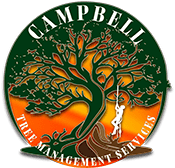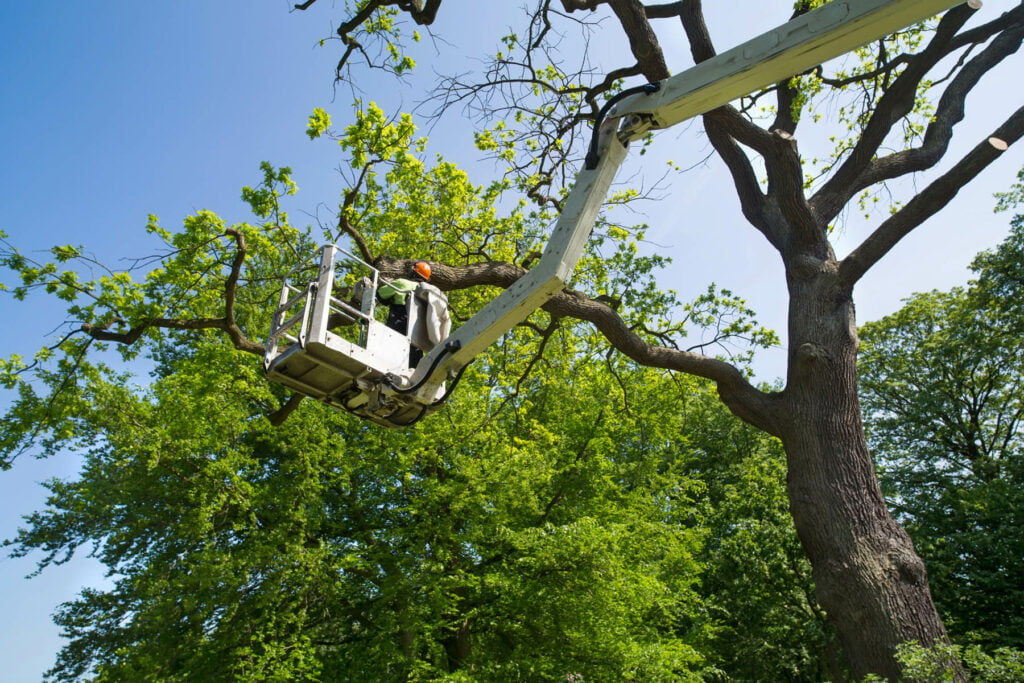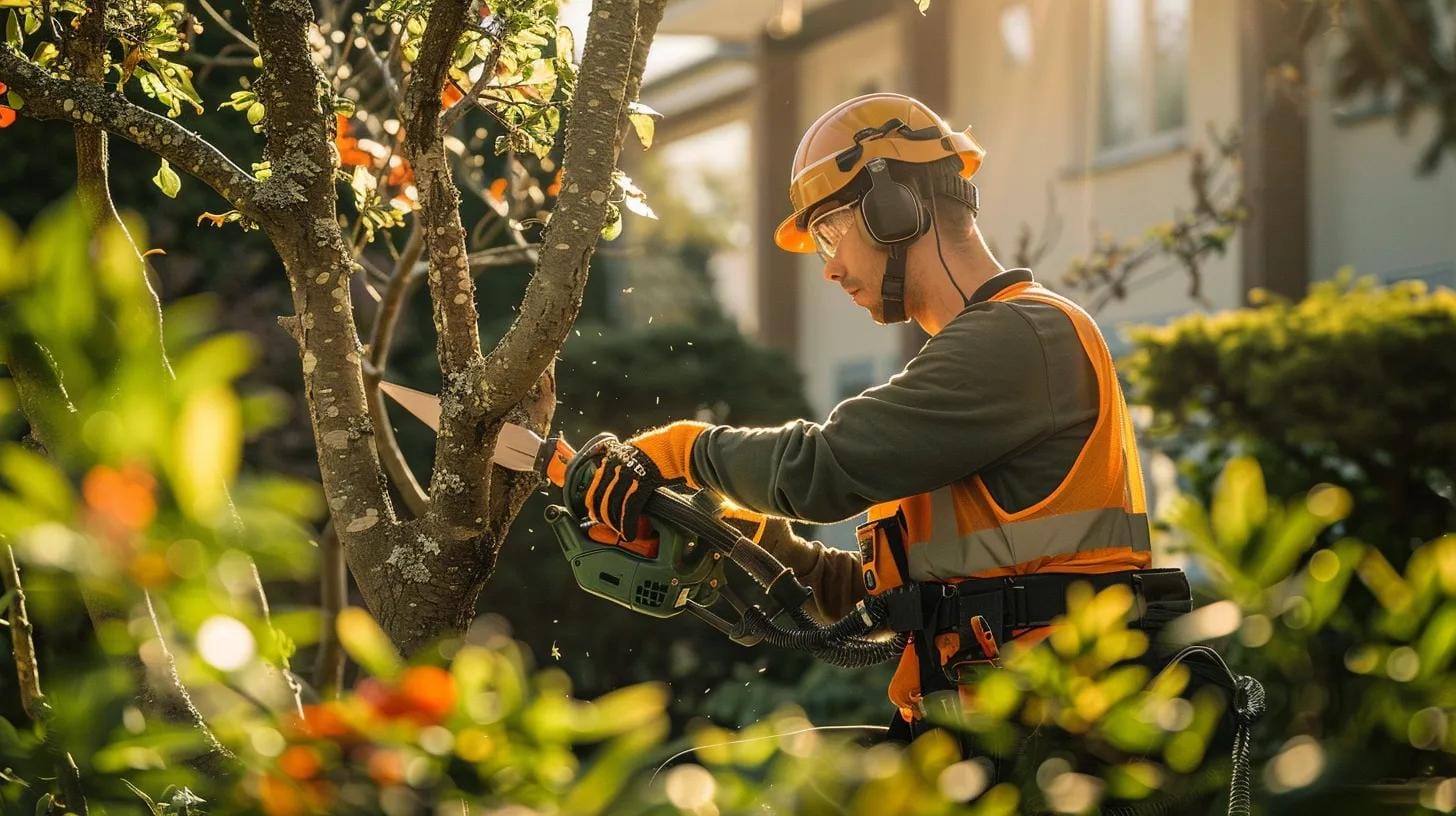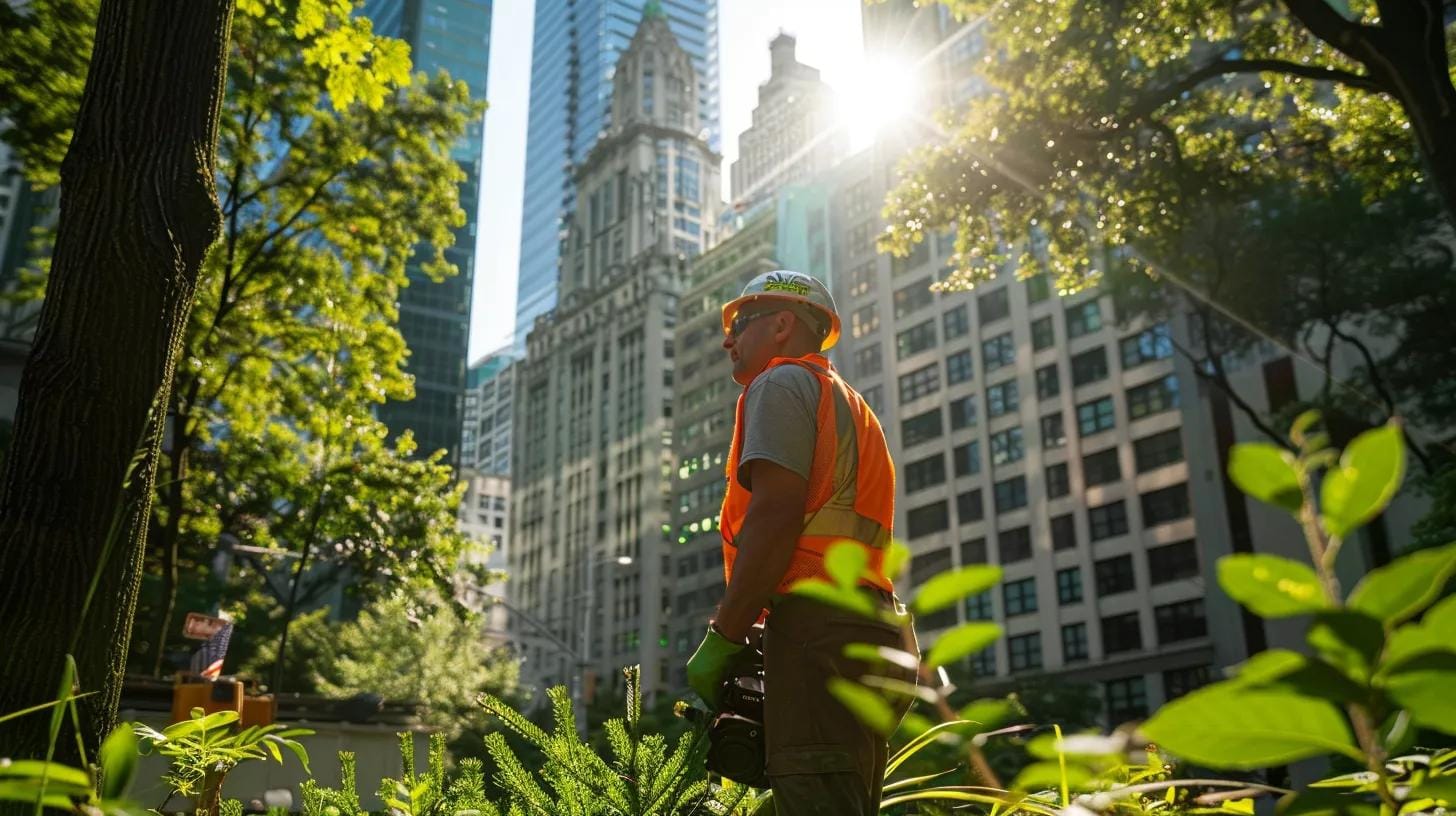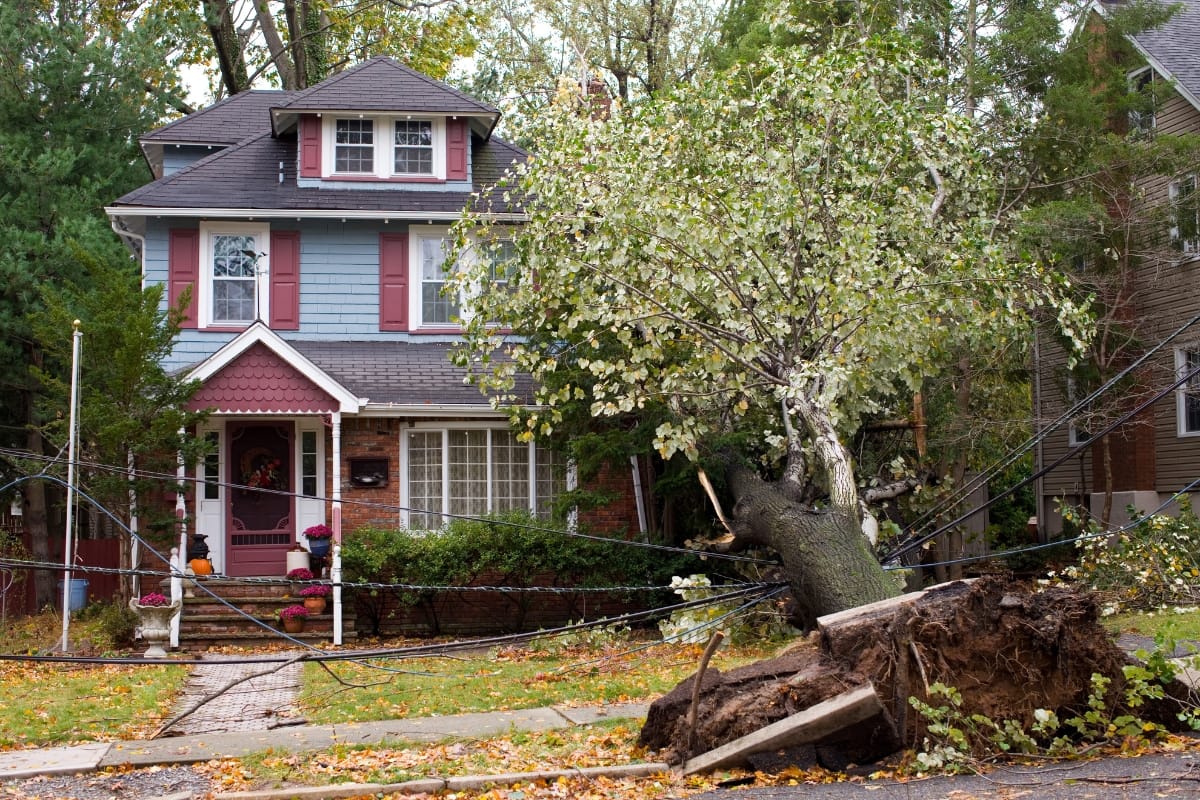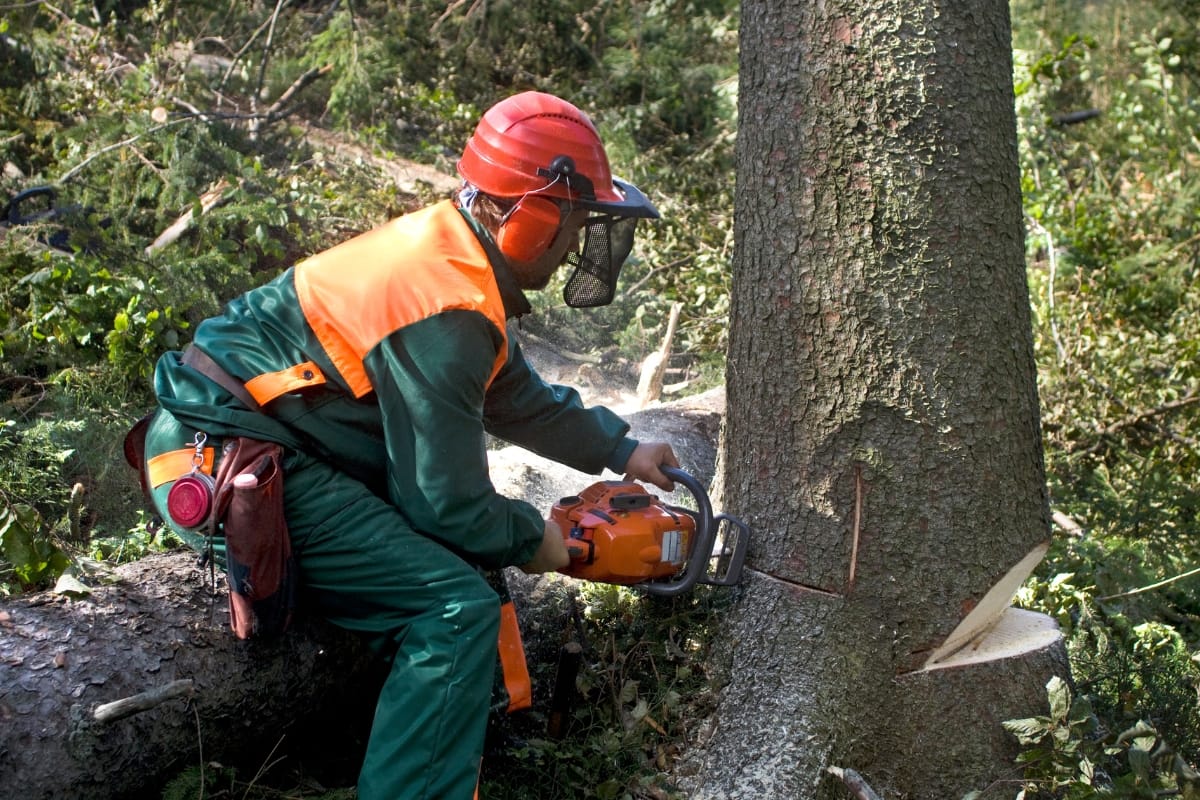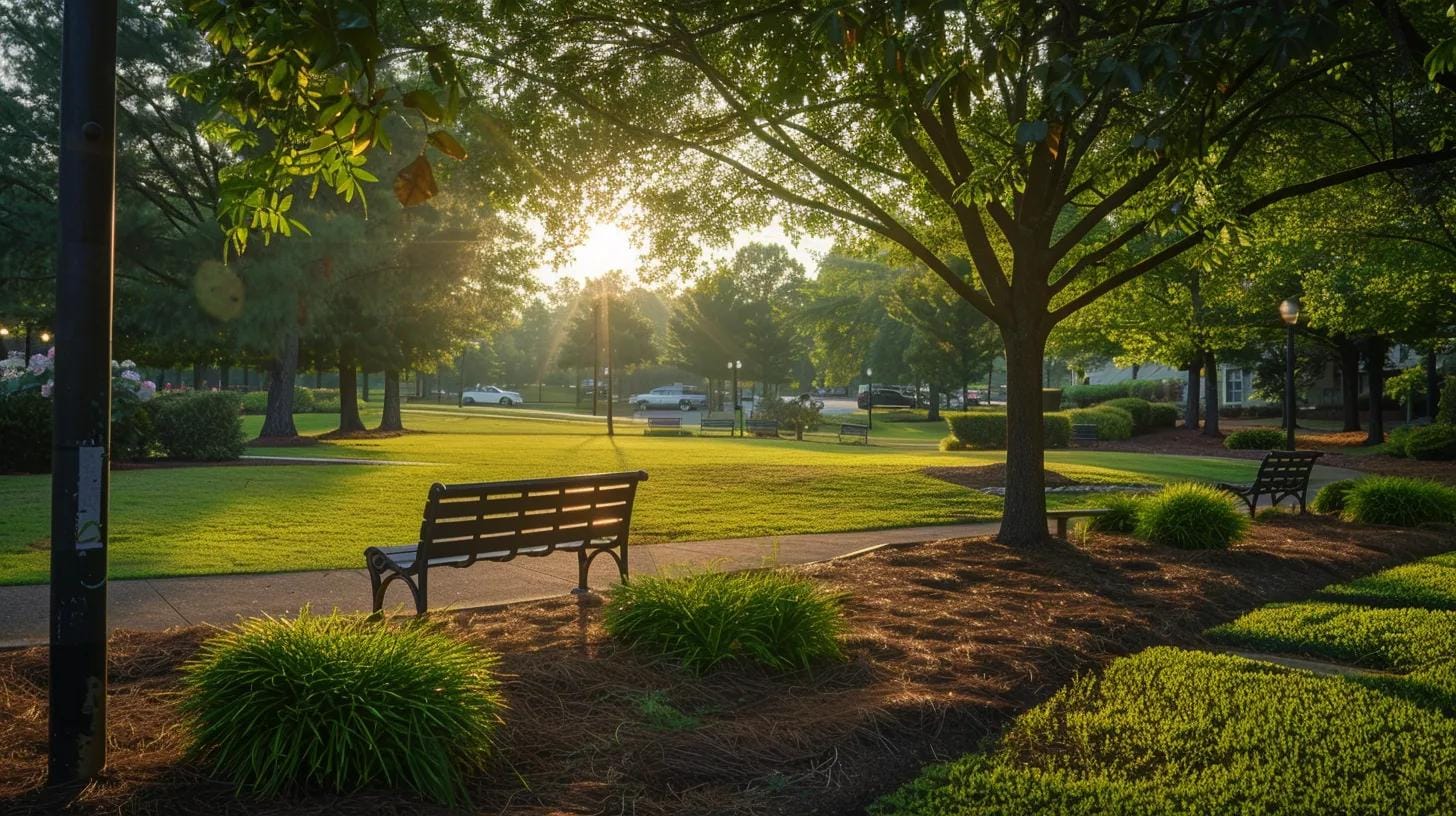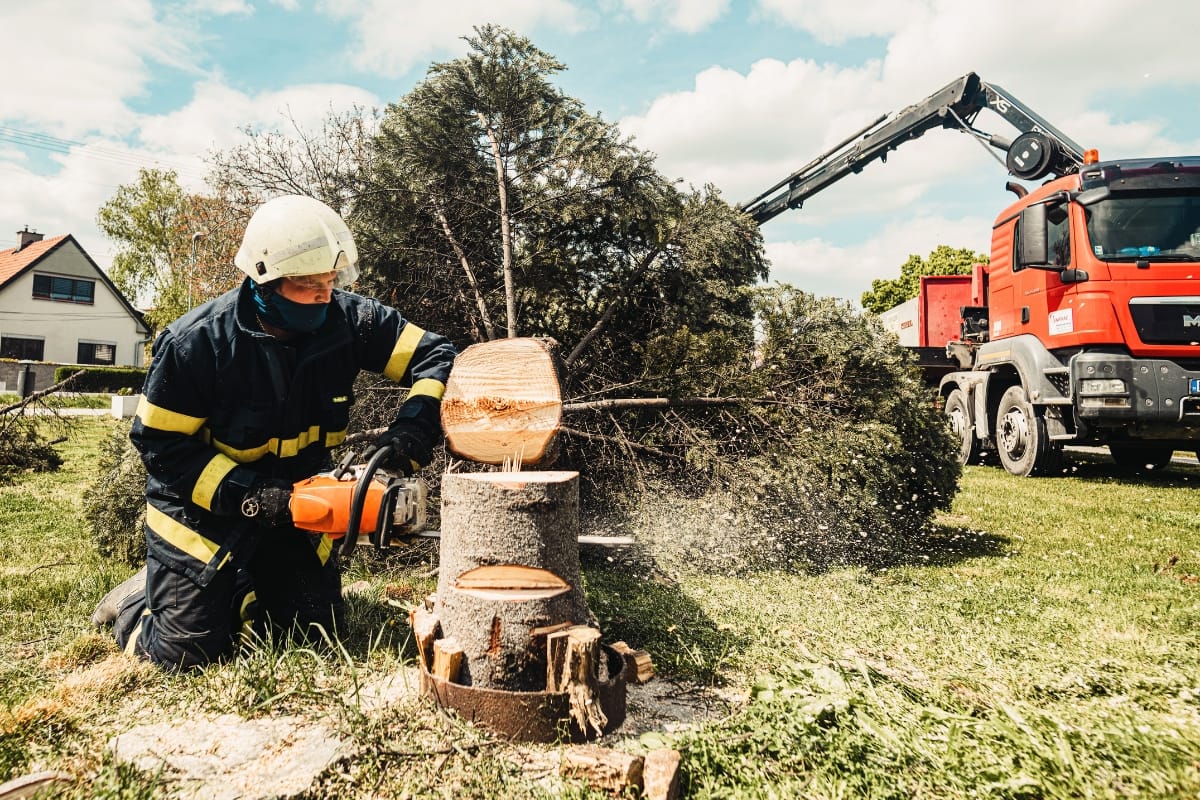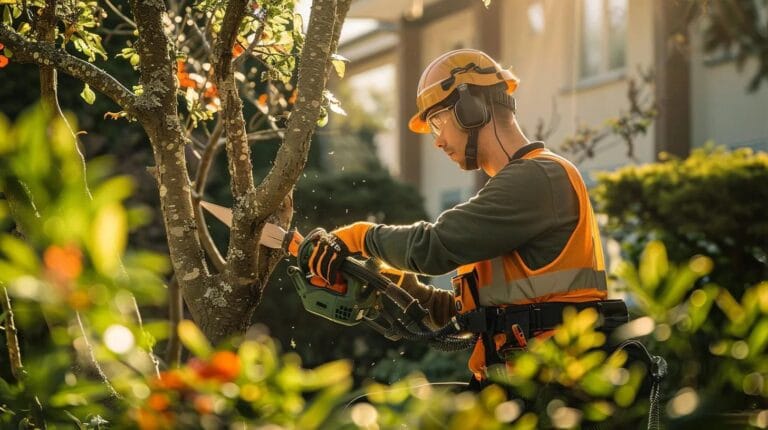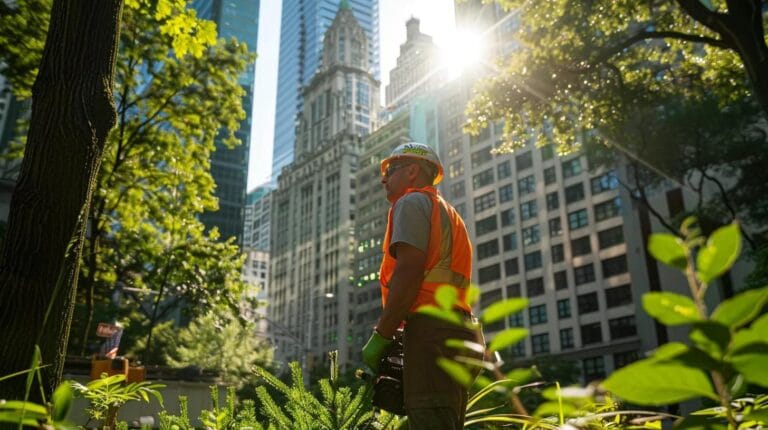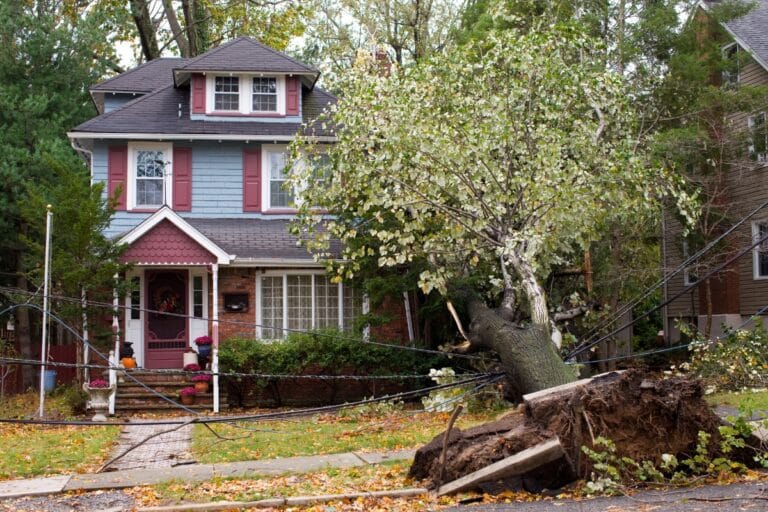When severe storms hit Atlanta, fallen trees can create dangerous obstacles, damage property, and disrupt daily life—making quick and safe cleanup a top priority for homeowners. Whether it’s a downed oak blocking your driveway or storm debris scattered across your yard, knowing the right steps to take can prevent injuries, avoid further damage, and speed up recovery. In this guide, we’ll walk you through the essential process of fallen tree cleanup, from assessing safety risks and documenting damage for insurance claims to choosing the right local professionals for removal and disposal.
Fallen Tree Cleanup Atlanta: From Damage to Done
What Are the Immediate Safety Steps After a Tree Falls on Your Property?
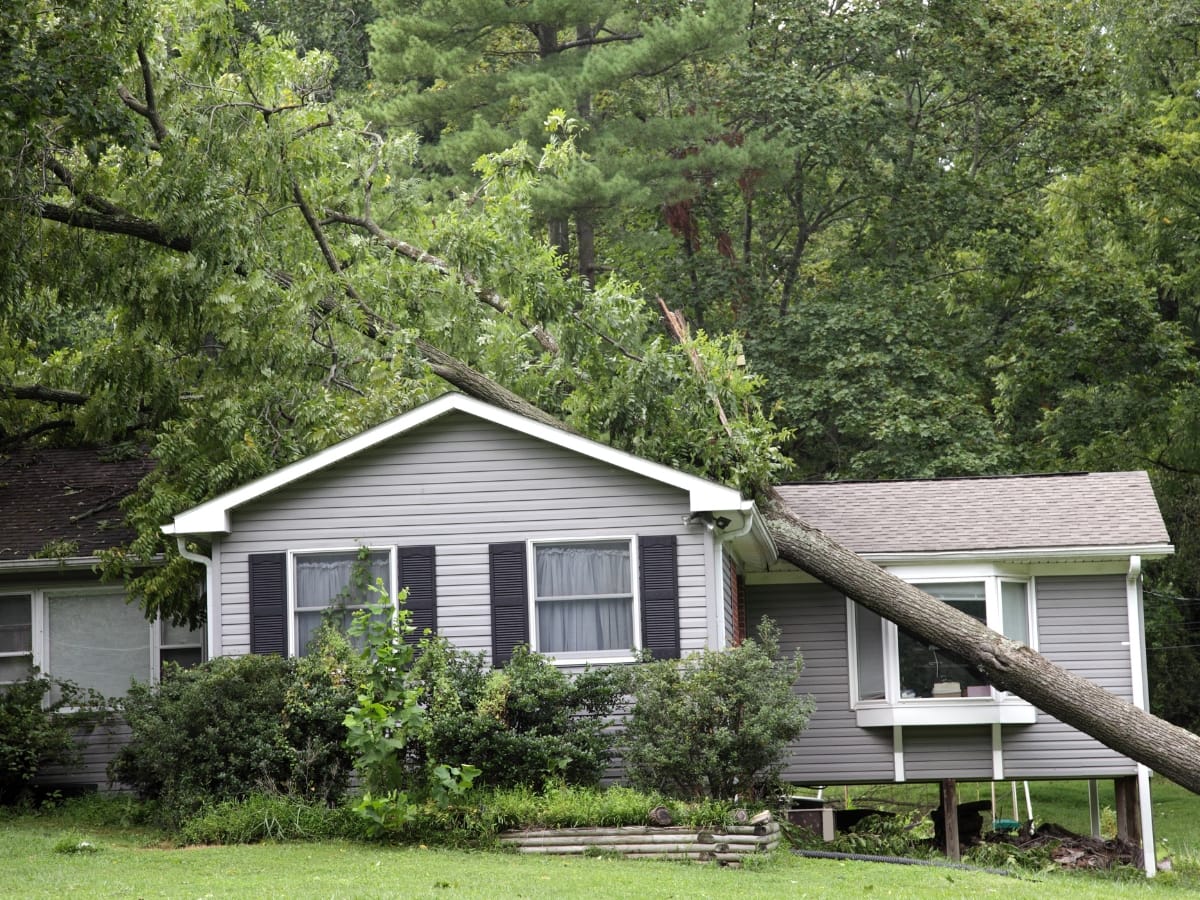
When a tree comes down, slow everything down for a moment and make the scene safe. Keep people and pets away from the area, look for obvious hazards, and shut off utilities if you suspect damage. Your goal is to prevent injuries and keep conditions from getting worse while you line up help for fallen tree cleanup and repairs.
How Do You Safely Assess Hazards Around Fallen Trees and Power Lines?
Start with distance. Scan for downed or sagging power lines and treat every line as live. If you see arcing, hear a hum, or smell burning insulation, back away immediately and call the utility. Next, study the tree itself. Leaning trunks, split leaders, and large limbs pinned under weight can be under heavy tension. A small change in balance can make them spring or roll without warning. Check the ground for sinkholes, soft soil, and root plates that have lifted to create hidden voids. If the tree hit a roof, porch, or fence, look for fresh cracks, bowing, or movement that could signal a partial collapse. Mark a wide perimeter with tape, bins, or chairs so family members and neighbors know to keep clear until a pro arrives.
When Should You Contact Emergency Services for Fallen Tree Hazards?
Call 911 right away if a tree has brought down utility lines, is blocking a public street, or has trapped someone in a vehicle or home. Report gas leaks if you smell sulfur, hear hissing near a meter, or see vegetation suddenly withering around a line. If your only exit is blocked or a structure looks unstable, do not try to move debris yourself. Fire and police can secure the area, coordinate with the power company, and keep bystanders out of danger. Once the scene is stable, your insurer and a certified arborist can handle the rest.
What Are the Best Practices for Documenting Storm Damage for Insurance Claims?
Good documentation speeds claims. Take wide photos that show the entire impacted area from different angles, then take close shots of specific storm damage to roofing, siding, windows, gutters, fences, and vehicles. A short video walkaround helps capture shifting shadows, water intrusion, and the full path the tree took. Include time stamps if your phone offers them. Do not remove branches or cut anything before your adjuster approves temporary work, unless you need to prevent further damage. In that case, tarp roof openings, set buckets under active drips, and keep receipts for all materials and emergency labor.
What Should You Do Before Professional Removal Begins?
Make a short list of what changed after the fall, including power loss, roof leaks, or doors that now stick. Move valuables away from the affected area if it is safe to do so. Cover furniture and electronics, and place plastic over floor vents to keep out debris. If the refrigerator lost power, keep the doors closed and note the time. Call your utility to report downed lines, then contact a licensed tree service with crane and rigging capability if the trunk is on a structure. Avoid using a chainsaw on a loaded tree. Bound fibers can release violently and cause serious injury.
How Can You Reduce Future Risk After the Cleanup?
Ask a certified arborist to inspect nearby trees for cracked limbs, trunk wounds, and root damage. Consider pruning, cabling, or removals that improve structure and wind tolerance. Review drainage so saturated soil does not undermine roots. Finally, keep a simple storm kit with tarps, tape, battery lights, and phone chargers so you can secure the site quickly if weather strikes again. These steps make the next response safer, faster, and far less stressful.
How to Choose Professional Emergency Tree Removal Services in Atlanta and Surrounding Areas
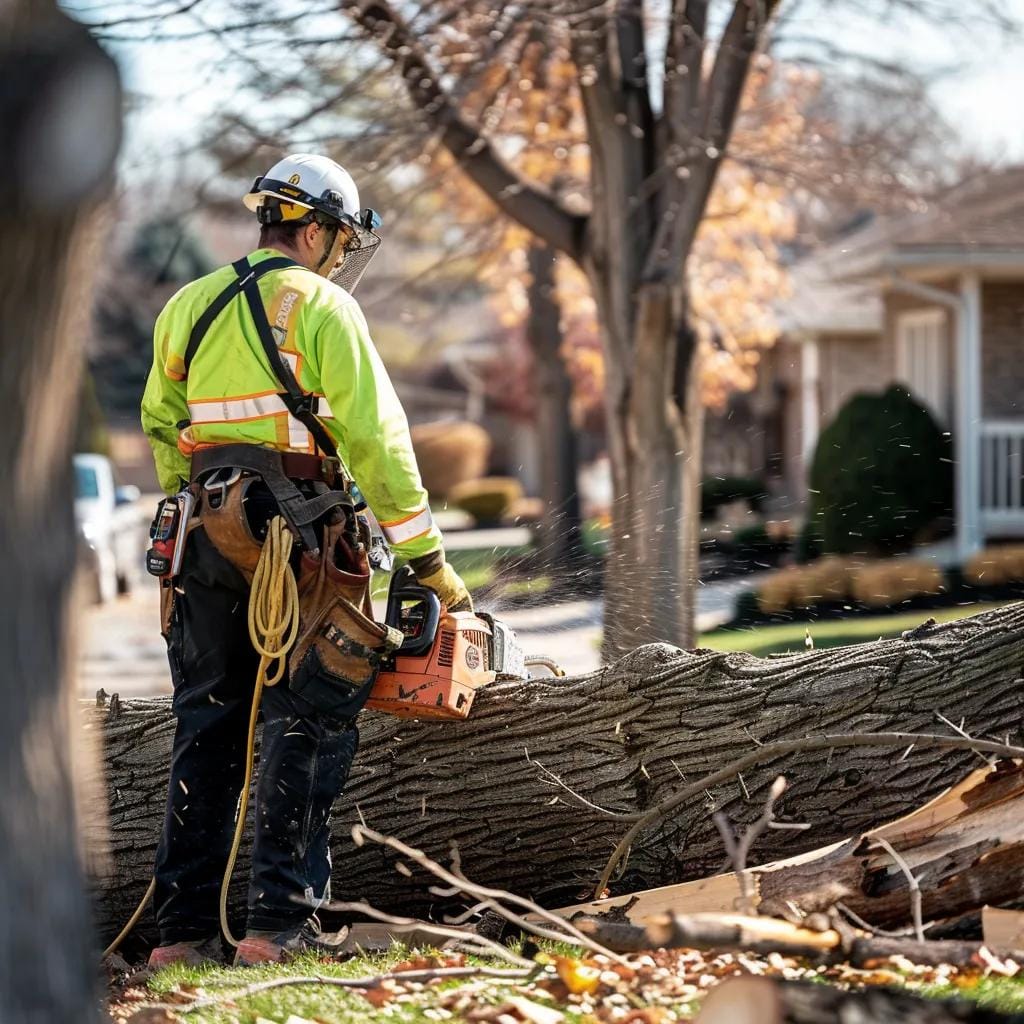
When a storm drops a tree on a roof, fence, or driveway, the right help matters. Choosing a service is less about flashy claims and more about proof. Look for current business licensing in Georgia, written proof of general liability and workers’ compensation, and experience with emergency jobs in tight urban lots and wooded neighborhoods. Ask how crews secure a site, whether they bring their own crane or partner with a crane company, and if they handle utility coordination, debris hauling, and optional stump grinding. A solid provider also understands local permitting and will document the scene for your insurer before work begins. Clear answers to these basics set you up for safe, efficient fallen tree cleanup instead of a drawn out headache.
Why Is Hiring a Certified Arborist Important for Fallen Tree Cleanup?
Certified arborists are trained to read wood structure and predict how a loaded trunk or limb will react when cut. That skill keeps people safe and prevents extra damage. An arborist will probe for internal rot, select a dismantling sequence that releases tension gradually, and design a rigging plan that lowers heavy sections under control. They also know how to protect the tree canopy you plan to keep by avoiding trunk wounds and soil compaction around roots.
After the removal, an arborist can recommend pruning, cabling, or disease management for nearby trees that were struck or stressed in the same event. When insurance is involved, their written assessment and photos help adjusters understand why specific methods or equipment were required. Ask for credentials such as ISA certification and confirm they carry the right insurance before anyone touches a saw.
What Does a Typical Emergency Fallen Tree Removal Process Involve?
Professional work follows three phases. First comes assessment and stabilization. The crew establishes a safety perimeter, checks for live utility lines, photographs the scene, and installs temporary protection like roof tarps or plywood over broken windows to limit further water damage. If utilities are involved, they pause until the power or gas company says the site is safe.
Next is controlled dismantling. Instead of one risky cut, the team removes the tree in sections. Climbers or a crane operator and rigger coordinate lifts while ground crews manage ropes, spot loads, and shield surfaces with mats to protect lawns, drives, and septic fields. The sawyer uses cuts that release tension slowly so limbs do not spring. This is precise, methodical work that prioritizes safety and property protection.
Finally, the cleanup restores order. Branches are chipped, logs are hauled, and the site is raked. Stumps can be ground on the same visit or scheduled later. Good crews finish by checking gutters, flashing, and penetrations near the impact point, noting items you may want a roofer or contractor to review. You receive photos of the work and a simple invoice that aligns with what your adjuster expects.
How Does 24/7 Availability Impact Storm Damage Response?
Speed matters because open roofs lead to water intrusion, mold, and higher repair costs. A service that truly operates around the clock can secure a site the same day or night, often within hours of the call, which shortens the chain of secondary damage and reduces liability from blocked sidewalks or shared drives. Quick action also helps insurers schedule their inspection sooner because the scene is already safe and accessible.
Even with rapid response, insist on transparency. Ask for after hours rates in writing, a clear scope of the “make safe” work versus full removal, and confirmation that no structural repairs will be performed without proper licensing. Beware of door to door storm chasers. Favor firms with local references, a documented equipment list, and insurance certificates that name you as the certificate holder.
What Does Comprehensive Storm Damage Tree Debris Removal Include?
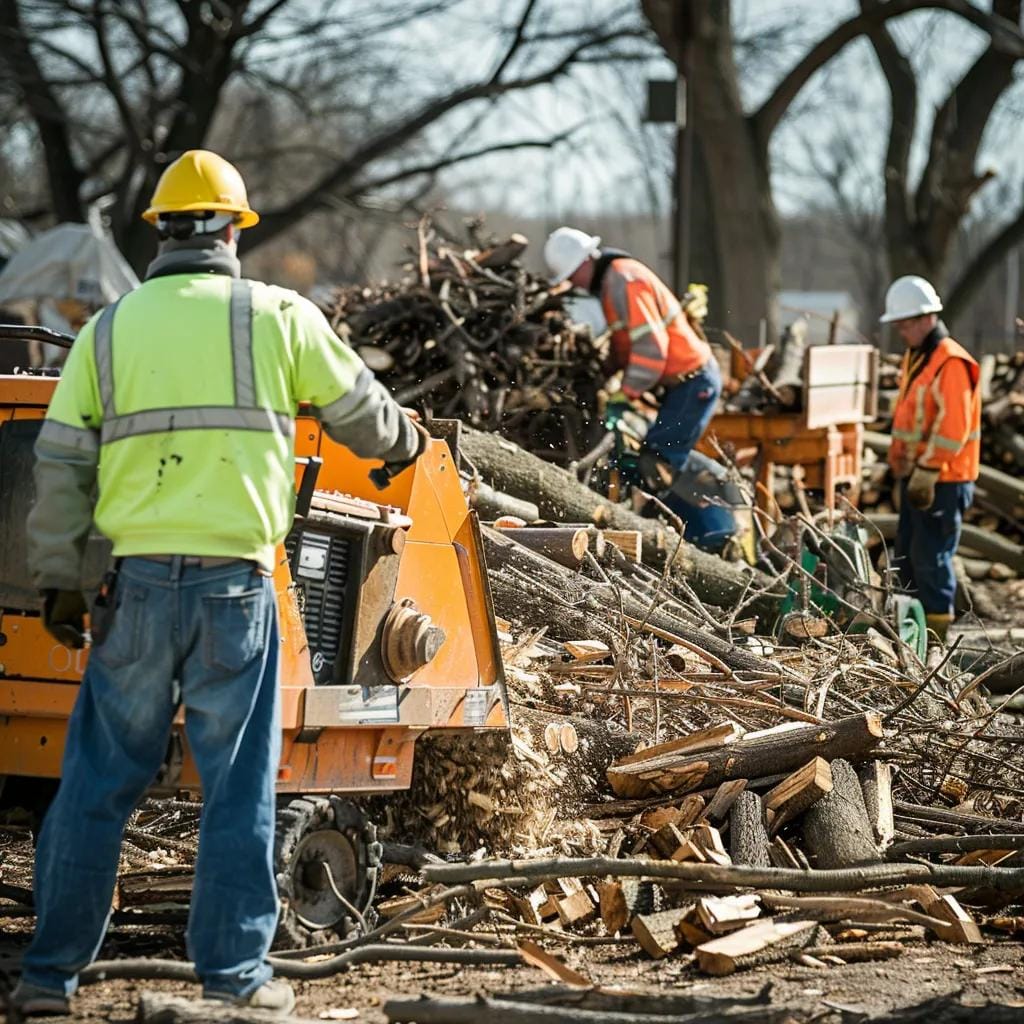
Comprehensive debris removal means more than cutting a trunk and driving away. It covers the full cycle of fallen tree cleanup: securing the scene, dismantling the tree in a controlled way, removing every branch and log, and restoring the yard so walkways, driveways, and outdoor areas are safe and usable again. The standard is simple to understand on site. When crews finish, there should be no loose limbs in the grass, no ruts from equipment, and no hazards left behind.
How Are Fallen Branches, Limbs, and Uprooted Trees Safely Removed?
Work starts with a safety survey. The crew checks for live power lines, gas meters, damaged roofs, and unstable limbs under tension. They set a perimeter and protect hardscapes and turf with ground mats. Large trunks resting on structures are taken down in sections. Climbers and crane operators coordinate lifts, while rigging lowers pieces under control to avoid impact damage. Smaller limbs are fed to a chipper as they come off the tree to keep the site clear and efficient. Logs and stumps are sized for loading, then hauled away on dedicated trucks. This sequence keeps people out of harm’s way, limits property scarring, and moves material off your lot without clogging access.
What Are Environmentally Responsible Debris Disposal and Recycling Practices?
Responsible disposal puts wood to work. Clean chips can be reused as landscape mulch or for erosion control on trails. Sound logs may be milled or repurposed for local projects when size and species allow. Firewood grade material can be set aside for community use where permitted. Loads that cannot be reused are taken to approved green-waste facilities rather than mixed landfills. Good operators track where debris goes and separate contaminants so nothing harmful rides along with the organics. This approach reduces landfill volume, returns nutrients to soil, and aligns the cleanup with local sustainability goals.
How Is Post-Removal Property Cleanup and Yard Restoration Handled?
Site restoration begins as the last sections come down. Crews rake and vacuum fine debris from lawns and beds, blow off hard surfaces, and clear gutters near the impact area. If stump grinding is part of the scope, the stump is ground below grade, chips are removed or blended as requested, and the cavity is backfilled and leveled. Minor turf damage from equipment is repaired with topsoil and seed, and disturbed beds are reshaped so edging lines look intentional. Where a tree lifted a root plate, the grade is corrected to remove trip hazards and restore drainage. A final pass checks for nails, screws, or hardware that may have fallen during roof stabilization, using a rolling magnet to keep driveways and paths tire safe.
What Should You Expect Before and After the Fallen Tree Removal Job?
Ahead of work, expect clear communication on the plan, equipment list, and any coordination with utilities or insurance. During the job, crews should document conditions with photos so adjusters understand why certain methods were necessary. Afterward, you should receive before-and-after images, a simple summary of the tasks completed, and guidance on next steps such as roof inspections, tree health checks on nearby canopy, and optional replanting. Done well, comprehensive debris removal leaves you with a safe, clean property and a straightforward path to finish repairs.
How Much Does Fallen Tree Cleanup Cost in Atlanta and How Does Insurance Coverage Work?
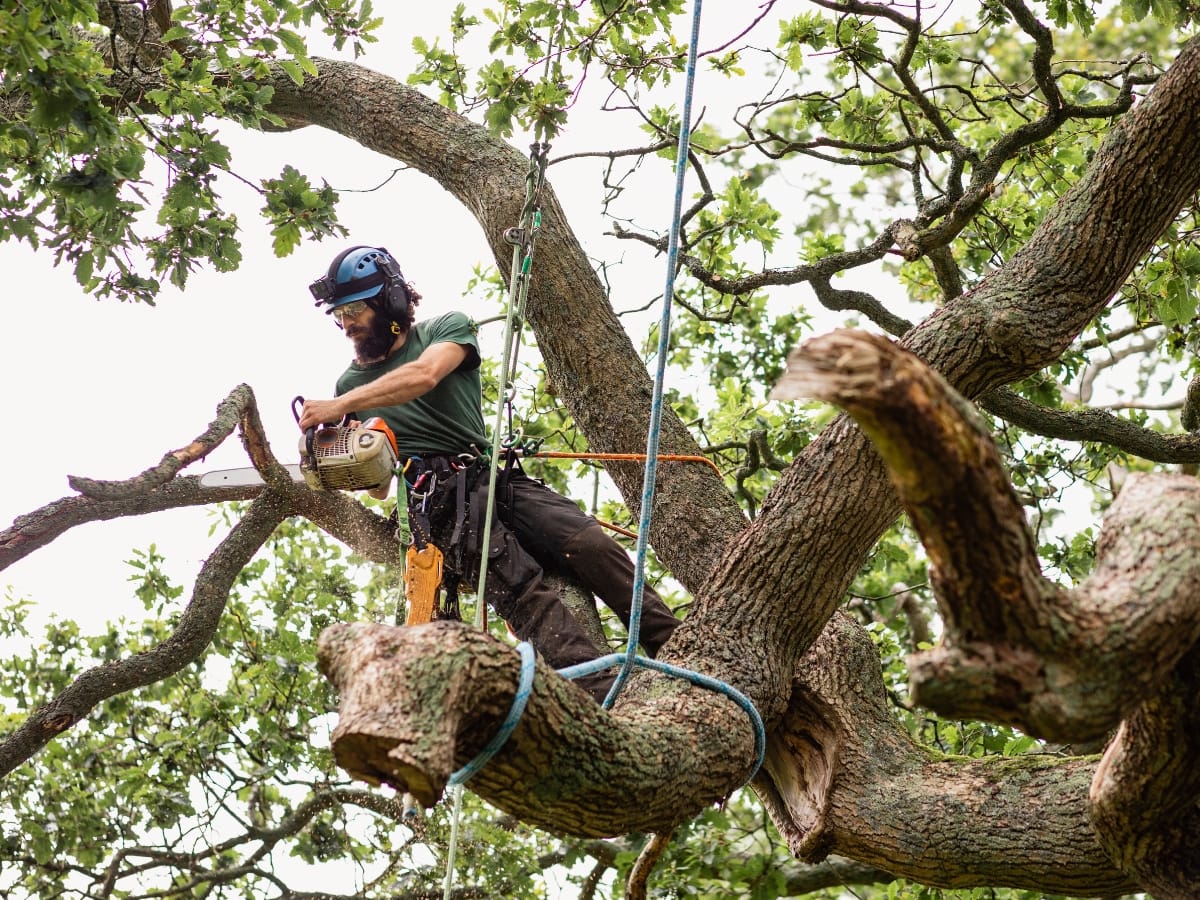
When storms roll through Atlanta, costs for fallen tree cleanup can vary widely. Price depends on what fell, where it landed, and how quickly the work must happen. Knowing the drivers of cost and how insurance typically responds helps you budget and avoid surprises.
What Factors Influence the Cost of Fallen Tree Removal?
Size is the first lever. A small ornamental tree that can be cut and carried by hand is a very different job from a 24 inch oak sprawled across a roof. Larger diameter means heavier wood, longer cutting time, and often a crane to lift sections safely.
Access is the second lever. A tree in an open front yard is faster and cheaper to remove than one wedged between a house and a fence, hanging over a pool, or sitting on a slope. Tight spaces require more rigging and ground protection to avoid secondary damage.
Timing is the third lever. Emergency work at night or during an active storm response usually carries a surcharge to cover extra staffing, lighting, and rapid mobilization. If the site is stable and safe to leave overnight, scheduling during normal hours can trim the bill.
Scope rounds out the list. Costs rise when the job includes roof tarping, stump grinding, log hauling to a disposal site, or restoration such as raking, magnetic nail sweeps, and turf repair. Ask your provider to separate the make safe portion from full debris removal so you can see where each dollar goes.
To put numbers to it, simple curbside cuts for a small tree may land in the low hundreds. Complex removals with crane time, structural protection, and full haul away can reach into the thousands. Written, itemized estimates are the best way to compare options.
Will Homeowners Insurance Cover Fallen Tree Removal After a Storm?
Policies vary, but there are common patterns. Most standard homeowners policies cover tree removal when a tree damages a covered structure such as a roof, garage, fence, or deck. Many also cover removal when a tree blocks the primary driveway and prevents access. If a tree falls in the yard without hitting anything and access is not blocked, coverage is less likely unless you have a specific endorsement.
Coverage limits matter. Debris removal is often capped, sometimes per occurrence and sometimes per tree. Your deductible applies, and the insurer pays the lesser of the limit or the actual bill after the deductible. If a neighbor’s tree falls onto your home during a storm, your own policy typically responds unless negligence is involved. Keep receipts and photos so the claim file tells a clear story.
How Can Campbell Tree Services GA Assist with Insurance Claims?
Storms are chaotic. Good documentation brings order. Crews can photograph the scene from wide angles and close up, capture tape-measured diameters, and note hazards such as live wires or roof penetrations. A brief written assessment that explains why cranes, rigging, or tarps were required helps adjusters understand scope. Coordinating an on site meeting with the adjuster can speed approval, and time stamped before and after photos make it easy to confirm that all authorized work was completed.
Why Choose Campbell Tree Services GA for Fallen Tree Cleanup in Acworth and Northwest Georgia?
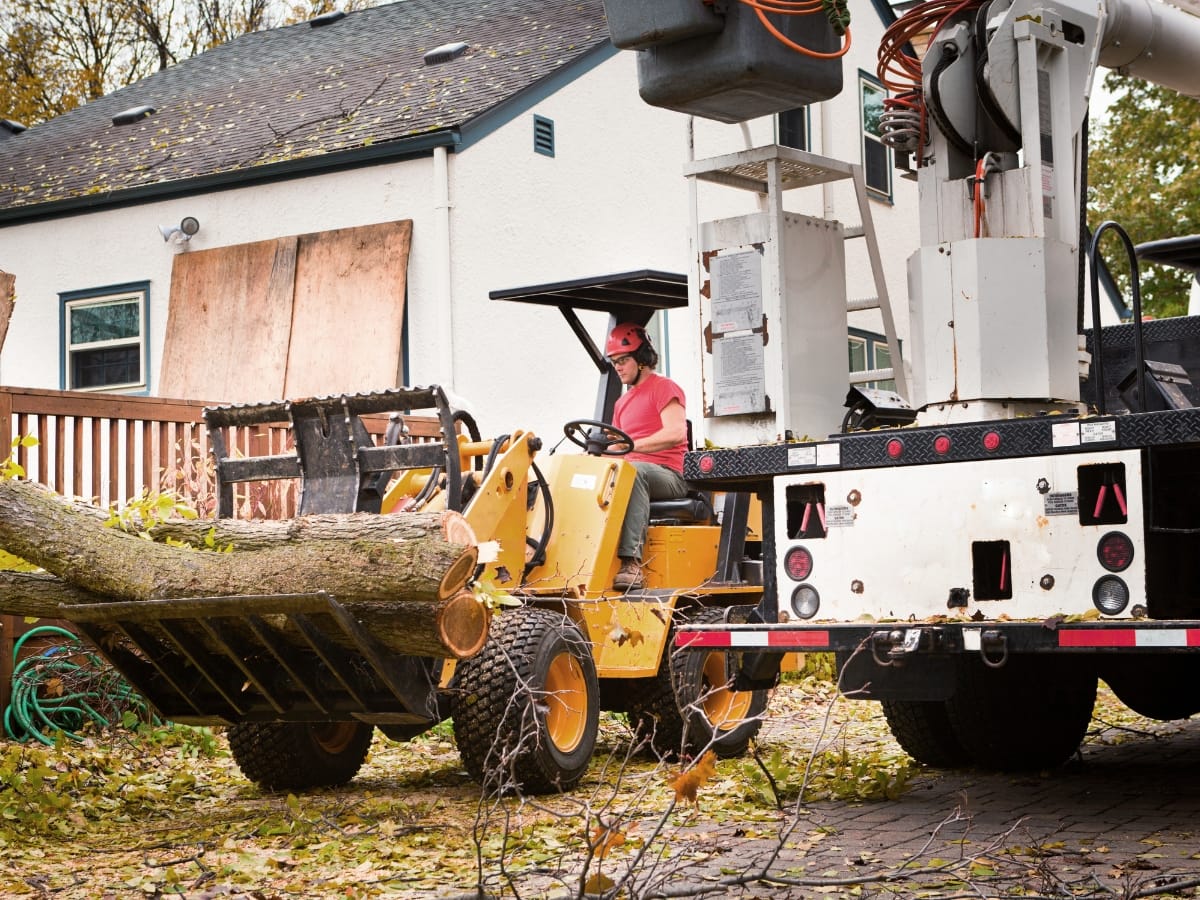
When storms move through and a tree comes down, you need work that is safe, fast, and carefully documented. Campbell Tree Services GA brings arborist leadership, true emergency response, and responsible debris handling to every job. The goal is simple: stabilize the site, protect your home, and return your yard to usable condition with as little disruption as possible. If you are comparing options for fallen tree cleanup, here is what sets our approach apart.
Arborist-Led Expertise You Can See
Every job is supervised with input from an ISA Certified Arborist. That matters because storm failures are rarely straightforward. Hidden decay, split leaders, loaded limbs, and compromised root plates change how a tree should be dismantled. An arborist reads those clues, sets the cutting sequence, and selects the right rigging so heavy sections come down under control. You also receive guidance on what to keep and what to remove, how to prune damaged trees for recovery, and how to reduce future risk around structures and play areas.
A True 24/7 Emergency Response
Downed trees do not wait for business hours, and neither do we. An on-call crew and stocked trucks allow us to mobilize quickly, often the same day. Priority goes to hazards on roofs, driveways, and utility areas. Before cutting begins, the crew confirms that utilities are safe, photographs the scene for your records, and prevents further damage with roof tarps or temporary bracing as needed. Fast action limits water intrusion, keeps access open, and shortens the overall recovery timeline.
Site Safety That Protects Your Home
Storm work is high-risk. We establish exclusion zones, use ground protection mats to shield lawns and hardscapes, and follow daily equipment inspections. In tight or elevated situations, cranes and aerial lifts are used to lower sections without dropping wood near walls, pools, or fences. The result is controlled removal that solves the problem without creating new damage.
Responsible Disposal That Benefits Your Property
Debris does not go straight to a landfill. Branches are chipped on site and can be left as mulch where appropriate or hauled away. Logs are bucked for firewood or recycled through local partners. Mulch can be used to improve soil moisture around remaining trees and to stabilize slopes that lost root support. This keeps material useful and supports a healthier landscape after the cleanup.
Clear Pricing and Insurance-Ready Documentation
Storm days are stressful, so paperwork should not be. You receive an itemized estimate that separates make-safe work, full debris removal, stump grinding, and any restoration. We provide time-stamped photos, diameter measurements, and a brief written summary that explains why specific equipment and methods were required. If an adjuster needs a site meeting, we coordinate it and walk them through the job so your claim moves faster.
What To Expect On The Day Of Service
First comes a safety sweep for power lines, gas leaks, and unstable limbs. Next, the crew sets access routes and ground protection. Sections are removed in a planned order, starting with high and loaded limbs, then the trunk. Chips and wood are cleared as the work progresses so the site stays organized. Before leaving, we rake, magnet sweep where nails or shingles fell, and review any recommended follow-up such as pruning or root zone care.
What Preventative Measures Can Protect Your Trees From Future Storm Damage?
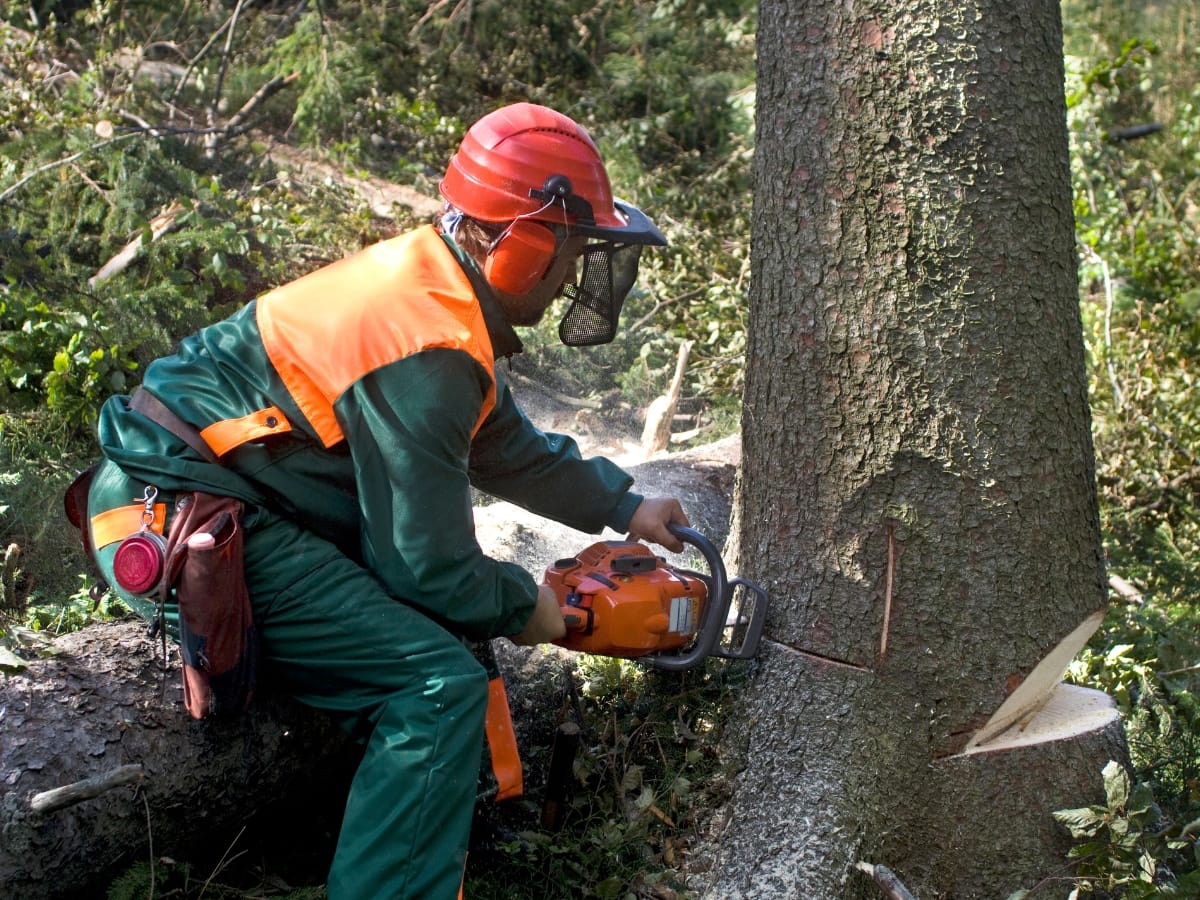
Emergency work fixes the immediate problem, but the best way to avoid it next time is steady, thoughtful care. Strong structure, healthy roots, and sound site conditions help trees stand up to wind, heavy rain, and occasional ice. If you have already dealt with fallen tree cleanup this year, a preventive plan can save money, stress, and landscape loss when the next front rolls through.
How Do Regular Tree Health Assessments Reduce Storm Risks?
A seasonal check by a qualified arborist functions like a physical for your trees. The inspection looks at crown balance, branch unions, decay pockets, and any movement at the root flare that might hint at root plate instability. Soil is evaluated for compaction, drainage, and nutrient balance, since thin, compacted soils weaken anchoring roots. Early disease or pest activity is flagged before it spreads into load-bearing wood. With that picture in hand, you can tackle small issues on your schedule instead of facing a failure during severe weather.
What Pruning and Maintenance Practices Help Prevent Tree Damage?
Good pruning reduces the sail effect without butchering the canopy. Removing dead and rubbing branches takes weight off weak points and reduces the chance of snapping in a gust. Thinning tight interior growth allows wind to pass through instead of pushing against a solid wall of leaves. Long, overextended limbs can be shortened to bring weight closer to the trunk, which lowers leverage during storms. On valuable trees with vulnerable unions, cabling and bracing can share the load between leaders and keep a split from widening. Avoid topping. It creates weak regrowth and invites decay, which increases rather than reduces risk.
Below the surface, roots need care too. Keep a wide mulch ring free of grass to protect the critical root zone and to keep mowers away from the trunk. Maintain even soil moisture through dry spells so fine roots do not die back before storm season. Where construction or foot traffic has compacted soil, air spading and compost topdressing can restore oxygen and water movement. If grade changes or downspouts dump water toward trunks, simple drainage adjustments prevent saturated soils that let trees rock in the wind.
When Should You Schedule Pre-Storm Tree Care Services?
Timing matters. Plan evaluations and any non-emergency pruning four to six weeks ahead of your area’s typical severe weather window. That gives pruning wounds time to close and schedules time for supplemental work such as fertilization, soil amendment, or selective cabling if the assessment calls for it. For coastal or lake-effect zones, that timing may shift earlier to beat tropical systems. In North Georgia, late spring and late summer checks work well, since strong storms often arrive with those seasonal transitions.
What Else Can You Do Beyond Pruning?
Choose the right species for the site. Fast-growing, brittle trees near driveways, roofs, or service lines are frequent storm casualties. When planting or replacing, match mature size to available space and favor species known for strong branch structure. Give new trees enough room for roots to spread, and stake only when necessary and only for a short period so trunks develop natural strength. For landmark trees in exposed locations, lightning protection may be worth considering. After any strong storm, walk the property. Note fresh cracks, hanging limbs, soil heaving, or a tree that now leans where it did not before, and schedule follow-up promptly.
Which Areas in Atlanta, Acworth, and Northwest Georgia Does Campbell Tree Services GA Serve?
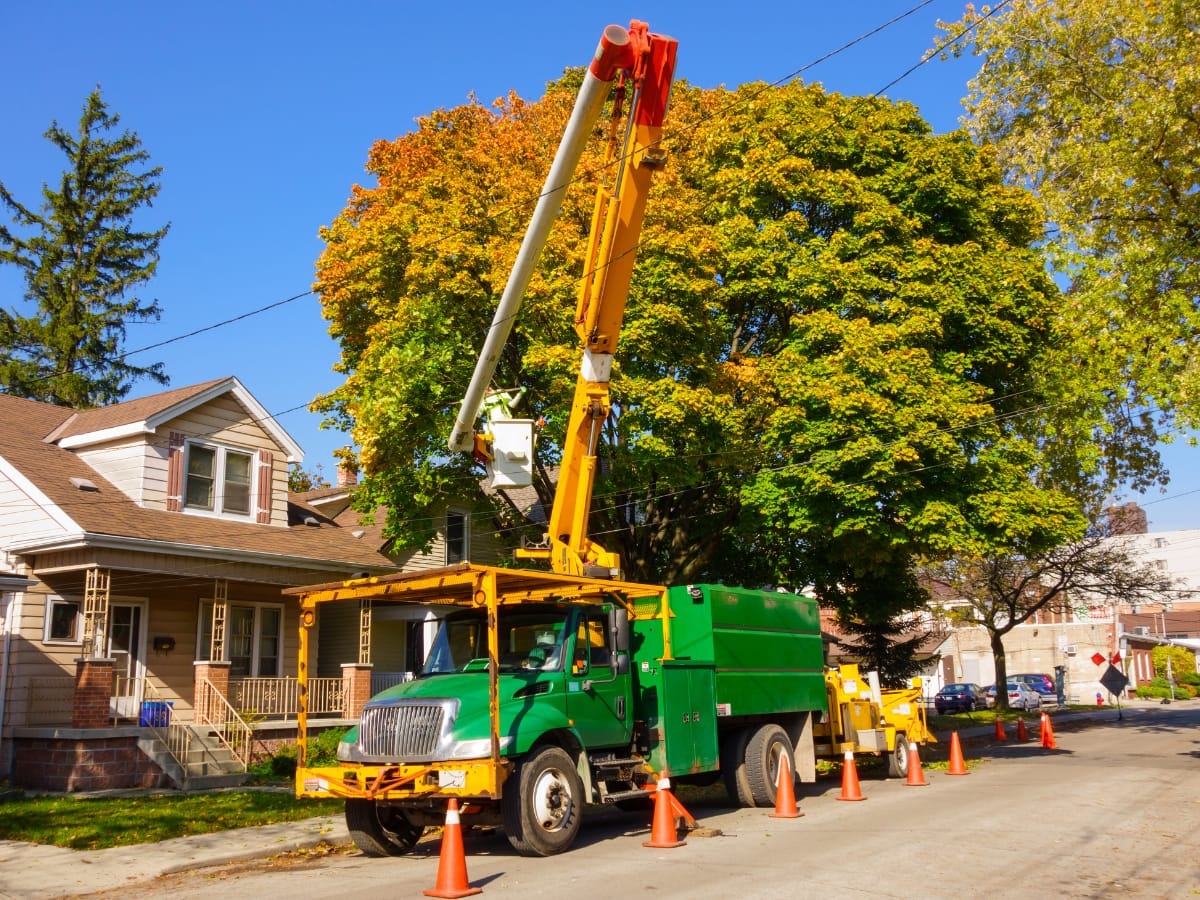
Campbell Tree Services GA supports homeowners and businesses across a wide swath of Northwest Georgia with emergency response and scheduled tree work. That footprint allows crews to reach storm sites quickly, stabilize hazards, and complete fallen tree cleanup without long delays. Local operators know neighborhood traffic patterns, common utility corridors, and seasonal storm risks, which shortens arrival times and helps keep jobsites safe.
What Specific Towns and Neighborhoods Are Included in the Service Area?
Our core coverage includes Acworth, Woodstock, Kennesaw, Marietta, Roswell, and Canton. Crews also work throughout Cobb, Cherokee, Paulding, and Bartow counties. Within these communities we routinely operate in single-family neighborhoods, townhome associations, mixed-use corridors, and light commercial districts. Familiarity with municipal right-of-way rules, tree protection ordinances, and HOA guidelines means permits, staging, and debris routing are planned to match local expectations. That reduces back-and-forth with property managers and helps projects move from assessment to completion with fewer interruptions.
How Does Emergency Dispatch Work for Storm Damage Calls?
Severe weather rarely follows a schedule, so field teams rotate on an after-hours roster during peak storm seasons. When a request comes in, a dispatcher confirms site hazards such as downed lines, blocked driveways, or roof impact. The closest crew with the right equipment package is sent, whether the job needs a bucket truck for canopy work, a crane for heavy trunk sections, or compact rigs for tight side yards. On arrival, the lead technician establishes an exclusion zone, documents conditions for insurance, and sets a safe cut order that prevents rolling, shifting, or secondary damage. If utilities are involved, work is coordinated with the power company before cutting begins.
What Does a Typical Cleanup and Restoration Sequence Include?
Every site is different, but the sequence is consistent. First, crews stabilize anything that could move under load. Next, limbs are lowered in controlled pieces using ropes and rigging blocks, or by crane when weight or access requires it. Branches are chipped on site to clear work areas and reduce hauling volume. Large trunk sections are cut to manageable lengths and loaded out. Stumps can be left for adjuster review or ground below grade once approved. At the end, the yard is raked, hard surfaces are blown clean, and any turf scuffs created by equipment are smoothed and top-dressed. The aim is to leave the property safe, tidy, and ready for repairs.
How Is Insurance Documentation Handled?
Photos are taken before, during, and after work to show impact points, cut paths, and debris volumes. A written scope lists equipment used, labor hours, and any protective measures taken to safeguard structures and plantings. For claims involving access blockage or damage to covered structures, this record helps adjusters verify the need and size of the cleanup. Clear documentation shortens approvals and limits repeat visits.
What Should Property Owners Do Before Crews Arrive?
Keep people and pets away from the tree and any tensioned limbs. Do not move tarps, ladders, or temporary supports placed by first responders. If it is safe, note utility account numbers and take wide and close photos from multiple angles. That is often enough to start the claim file while crews are en route.
Conclusion
Storm-damaged trees require prompt, professional attention to ensure safety and prevent further property damage. At Campbell Tree Management Services, our certified arborists provide expert fallen tree cleanup across Atlanta—combining emergency response with meticulous debris removal. Don’t risk DIY solutions—call (770) 286-8058 or send us a message now for your free quote and let our insured team restore your property quickly and safely.
